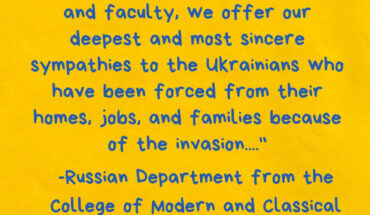NEW TUBERCULOSIS TEST COULD “HELP MILLIONS OF PEOPLE WORLDWIDE”
By Olivia Booth, Staff Writer
Professors Alessandra Luchini and Lance Liotta led Mason students Marissa Howard, Sarah Sharif, and Sameen Yusuf, as well as students from Johns Hopkins, Peru, and Italy to create an inexpensive and noninvasive way to test for tuberculosis (TB). The new technology could be life changing for tuberculosis patients.
According to statistics from the World Health Organization (WHO), 10.4 million people became ill with TB and 1.7 million TB patients died in 2016.
However, the deaths are not due to ineffective medication. Most patients with TB can be cured with modern medicines that are provided soon after diagnosis and taken properly, according to the WHO. It is when patients are not diagnosed early enough that TB spreads and becomes much more difficult to treat.
The new diagnosing method could help with this. The technology can measure a type of sugar — the leukocyte adhesion molecule (LAM) — which lays on the surface of the tuberculosis bacteria. The new noninvasive test works by sampling a patient’s urine.
“We showed that our technology could be used to measure several different kinds of markers for TB in the urine, and could be configured as a rapid test similar to a pregnancy test,” said Luchini. She explained that the markers can help specifically in both “designing better therapy and overcoming drug resistance.”
Many diagnostic tests before were expensive, invasive, and, above all, inaccurate. A New York Times article about the research declared that the group has “improved by at least 100 times the accuracy of testing for a sugar shed by tuberculosis bacteria.” Luchini herself claims that “a direct test in urine might help millions of people worldwide.”
The students will head to Peru for a year to validate their test on more than 1,000 patients. Additionally, the technology will be used “to discover a large number of new markers that were not known before,” according to Luchini.
Ceres Nanosciences, the company that enables the new tests, “are working with a number of industry partners who have strong interest in improved TB testing, and this could help accelerate the delivery of new methods to patients,” Luchini added.
The implications for the research could extend far beyond tuberculosis testing.
“Since we show that our test worked for known TB test, we now want to use it to discover wholly new molecules shed by the TB organism that were not known before,” Luchini said. “This can give us all sorts of new ideas of what the bacterium is doing in the human body.”
Photo Courtesy of Mason Creative Services/ Evan Cantwell




